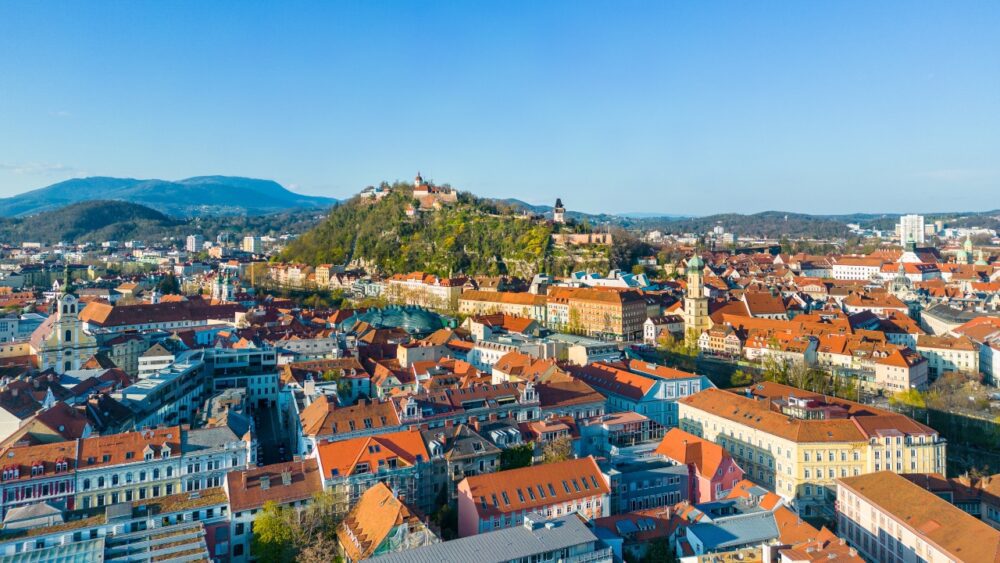
Is Graz worth visiting? In my opinion, it’s a hidden gem that deserves more attention. The first time I explored Graz, I was struck by its perfect mix of old-world charm and modern energy. From the medieval streets of the Old Town to the futuristic Kunsthaus, Graz felt like a city where history and innovation coexist beautifully.
Located in southeastern Austria, Graz is the country’s second-largest city and a UNESCO World Heritage Site. Known for its Renaissance courtyards, vibrant food scene, and creative spirit, Graz offers an experience that’s distinctly different from other Austrian cities. Whether you’re climbing the Schlossberg for panoramic views, exploring quirky museums, or indulging in Styrian delicacies, Graz has something for everyone. But is Graz worth visiting for you?
In this blog post, we’ll uncover the top 10 reasons why Graz should be on your travel list, from its architectural marvels to its culinary delights. We’ll also share some handy travel tips to make your visit unforgettable. Keep reading, and you’ll see why Graz might just become your favourite Austrian destination.
Table of Contents
Pros – Reasons You Should Visit Graz
1. A Beautiful and Well-Preserved Old Town
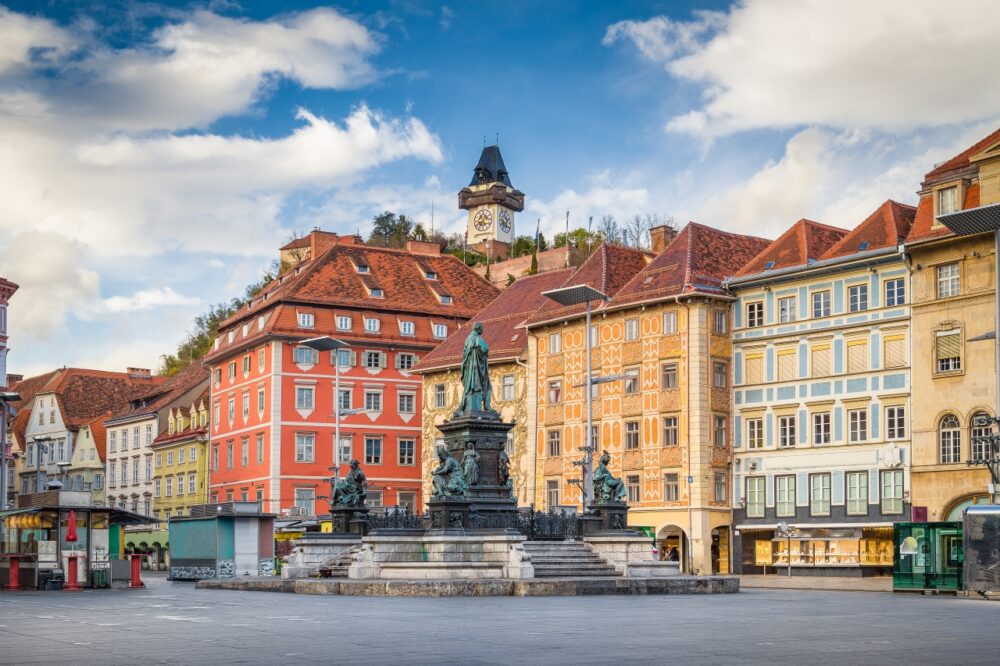
Graz has one of the best-preserved historic centers in Europe, and it’s no surprise that it has been designated a UNESCO World Heritage Site. The Old Town is a stunning blend of medieval, Renaissance, and Baroque architecture, with colorful facades, hidden courtyards, and elegant squares. Walking through its narrow streets feels like stepping back in time, yet the city also has a lively and youthful energy thanks to its university population.
I spent hours exploring the Old Town, stumbling upon charming alleyways and beautifully preserved palaces. Hauptplatz, the city’s main square, was particularly impressive, with its grand buildings and bustling cafés. Unlike some larger cities where history feels like a museum exhibit, Graz’s Old Town is full of life, making it a pleasure to wander at any time of day.
2. The Unique and Scenic Schlossberg Hill
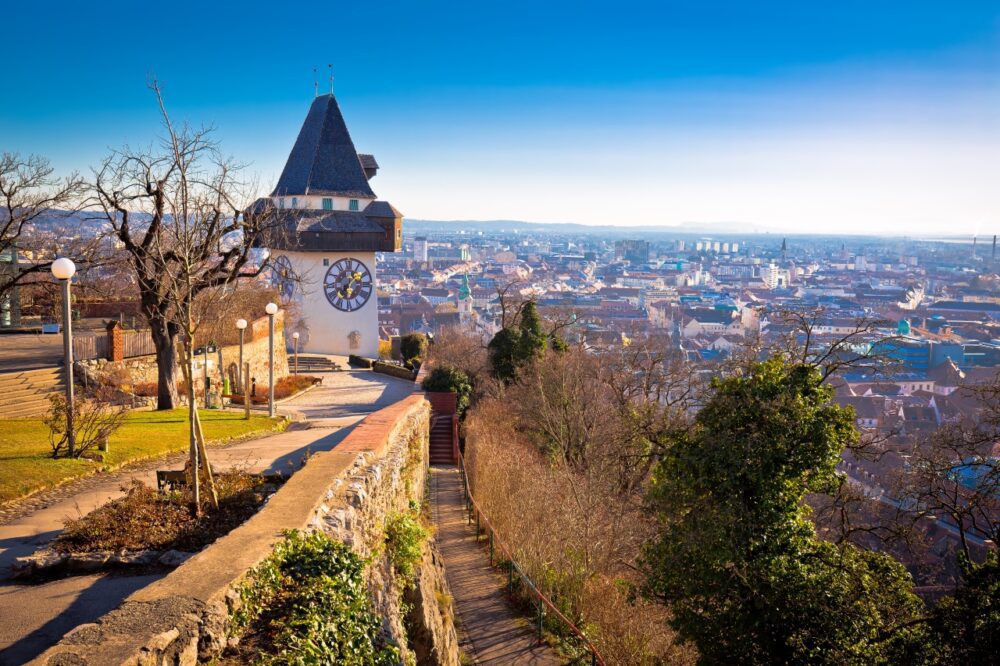
One of Graz’s most iconic landmarks is Schlossberg, a hill that rises above the city and offers breathtaking panoramic views. The hill is home to the famous Clock Tower, which has become a symbol of Graz, as well as scenic walking paths, fortress ruins, and charming cafés. You can reach the top by hiking, taking a funicular, or riding an elevator built inside the hill.
I took the funicular up to Schlossberg and was immediately greeted with one of the best views I’ve ever seen. The red rooftops of Graz stretched out below, framed by rolling hills in the distance. Later, I walked down the picturesque stairway that winds through the trees, stopping for coffee at a terrace overlooking the city. It’s the perfect place to take in Graz’s beauty and get a bit of fresh air.
3. A City with a Distinct Mediterranean Feel
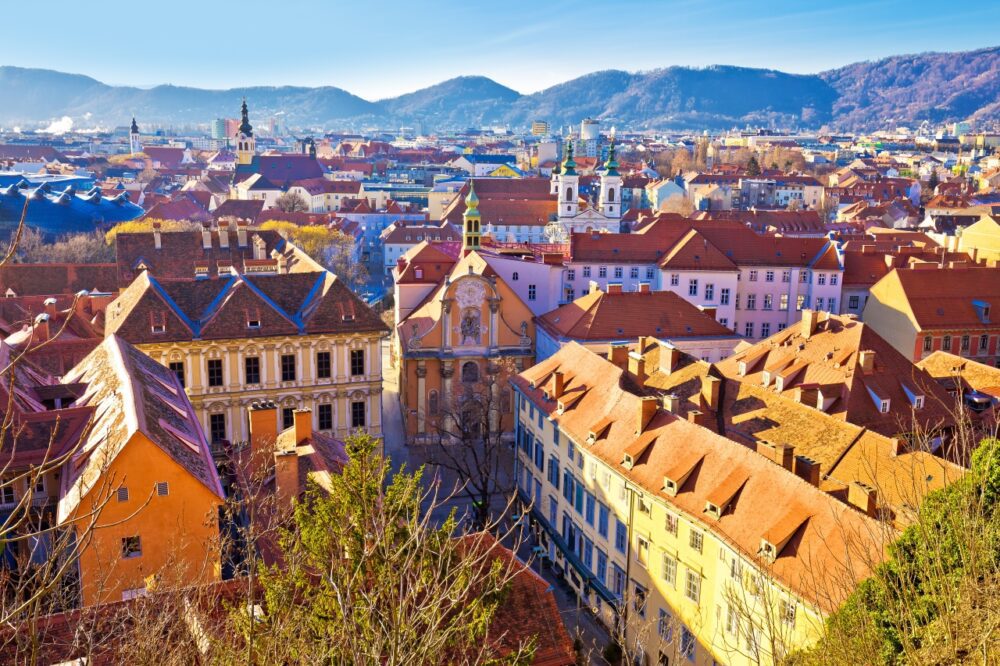
Despite being in Austria, Graz has a noticeable southern European influence, thanks to its location near Slovenia and Italy. The city’s red-roofed buildings, sunny climate, and relaxed pace give it a Mediterranean flair that sets it apart from other Austrian destinations. Many streets are lined with palm trees, and the outdoor café culture feels more like something you’d find in Italy than in central Europe.
I noticed this Mediterranean atmosphere most when sitting at a café in one of Graz’s squares. The sun was shining, people were leisurely sipping Aperol Spritz, and the pace of life felt slower than in cities like Vienna. If you love the charm of southern Europe but also enjoy Austrian traditions, Graz is the perfect blend of both.
4. A Foodie’s Paradise with Strong Styrian Culinary Traditions
Graz is the capital of Styria, a region known for its incredible food and wine. The city has a strong farm-to-table culture, with local markets, organic restaurants, and traditional Styrian dishes that showcase the best of the region’s produce. Styrian pumpkin seed oil, a dark, nutty-flavored oil, is a local specialty that’s used in everything from salads to ice cream.
I visited the Kaiser-Josef Market, where vendors sold fresh fruit, handmade cheeses, and bottles of Styrian wine. Later, I tried a classic Styrian dish—Backhendl, a crispy fried chicken served with a light salad drizzled in pumpkin seed oil. The flavors were rich but fresh, and it was clear that Graz takes pride in its culinary heritage. Whether you love traditional Austrian food or modern farm-to-table cuisine, Graz is a fantastic place to eat.
5. A Young and Creative City with a Strong Student Culture
Graz is home to several universities, making it one of the most youthful and dynamic cities in Austria. The large student population brings an energy that keeps the city buzzing with cultural events, concerts, and a thriving arts scene. Unlike Vienna or Salzburg, which can sometimes feel steeped in tradition, Graz has a fresh and forward-thinking vibe.
I noticed this creative energy when I visited the Lend and Gries districts, which are filled with independent shops, art galleries, and trendy cafés. Street art, pop-up markets, and live music performances were everywhere, making the city feel vibrant and full of life. If you enjoy cities that balance history with modern culture, Graz offers the best of both worlds.
6. The Eye-Catching Modern Architecture Blended with History
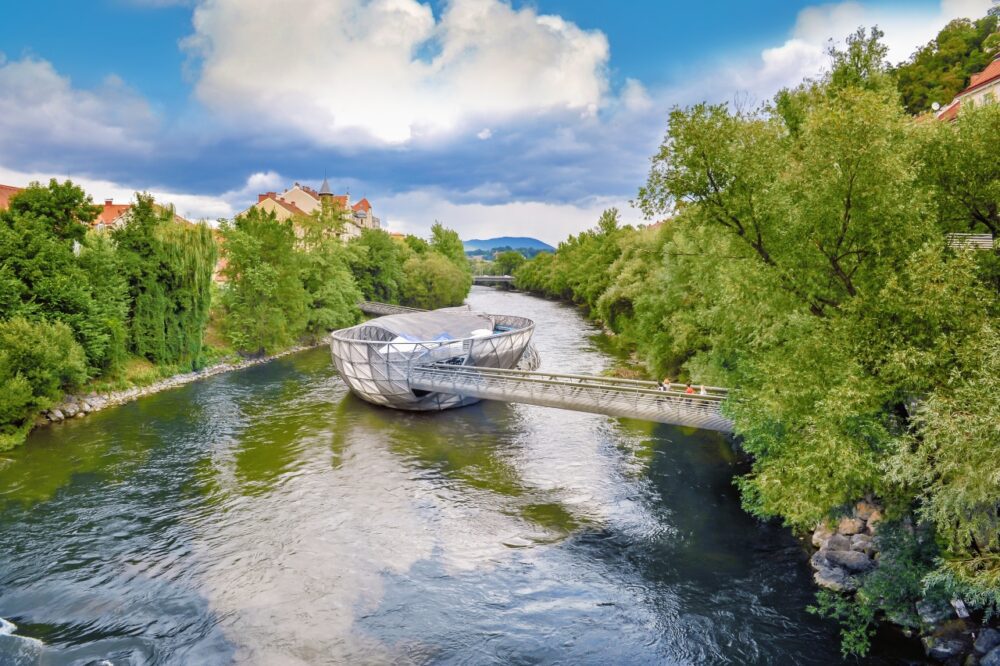
While Graz is known for its historic charm, it also has some of Austria’s most daring and creative modern architecture. The Kunsthaus Graz, often called the “Friendly Alien,” is a futuristic museum that looks like a giant blue bubble, standing in stark contrast to the surrounding Baroque buildings. Another standout is Murinsel, an artificial island in the Mur River designed as a floating steel structure with a café and amphitheater.
At first, I wasn’t sure how I felt about the Kunsthaus—its odd shape and glowing blue exterior seemed out of place. But after exploring it up close, I realized that Graz embraces this blend of old and new, making it one of Austria’s most architecturally interesting cities. Instead of clashing, the modern buildings give Graz an edgy and progressive feel.
7. The City is Green and Environmentally Friendly
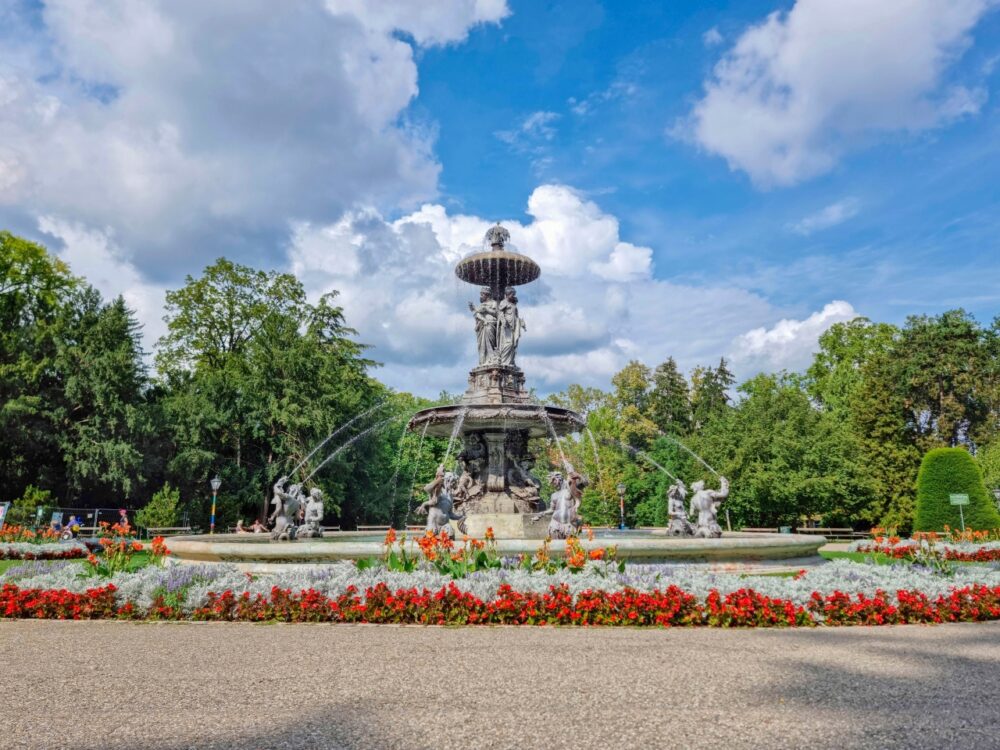
Graz has a strong commitment to sustainability and green spaces, making it one of Austria’s most environmentally friendly cities. Parks, gardens, and tree-lined streets make it a pleasant place to explore, and the city is very pedestrian- and cyclist-friendly. The public transportation system is efficient, and many locals prefer biking over driving.
I rented a bike and rode along the Mur River, passing through lush parks and scenic viewpoints. It was refreshing to be in a city where cycling is so common, and the clean air and well-maintained green spaces made it feel very livable. If you appreciate cities that prioritize the environment and sustainability, Graz is a great example of urban planning done right.
8. The Local Wine Culture and Nearby Vineyards
Styria is one of Austria’s top wine-producing regions, and Graz is the perfect place to experience it. The nearby Südsteiermark Wine Road, often called the “Tuscany of Austria,” is a stunning area filled with rolling vineyards and charming wineries. The region is famous for its crisp white wines, particularly Sauvignon Blanc and Gelber Muskateller.
I took a short trip outside the city to visit a vineyard, where I sat on a terrace overlooking endless rows of grapevines. The wine was refreshing and light, perfect for a warm day, and the experience felt completely different from the more well-known wine regions of Europe. Even if you don’t have time for a vineyard visit, Graz has plenty of wine bars where you can sample local varieties.
9. A Relaxed and Unpretentious Atmosphere
Unlike Vienna, which can sometimes feel formal, Graz has a much more laid-back and welcoming vibe. The city is stylish but not pretentious, and locals are friendly without being overly polished. Whether you’re in a traditional Austrian tavern or a modern café, there’s a relaxed energy that makes visitors feel at home.
I felt this easygoing atmosphere when I chatted with a shop owner in the Lend district—she was happy to share recommendations, and the conversation felt natural and unhurried. Graz is the kind of place where you can take your time, explore at your own pace, and never feel rushed.
10. A Great Base for Exploring Southern Austria and Beyond
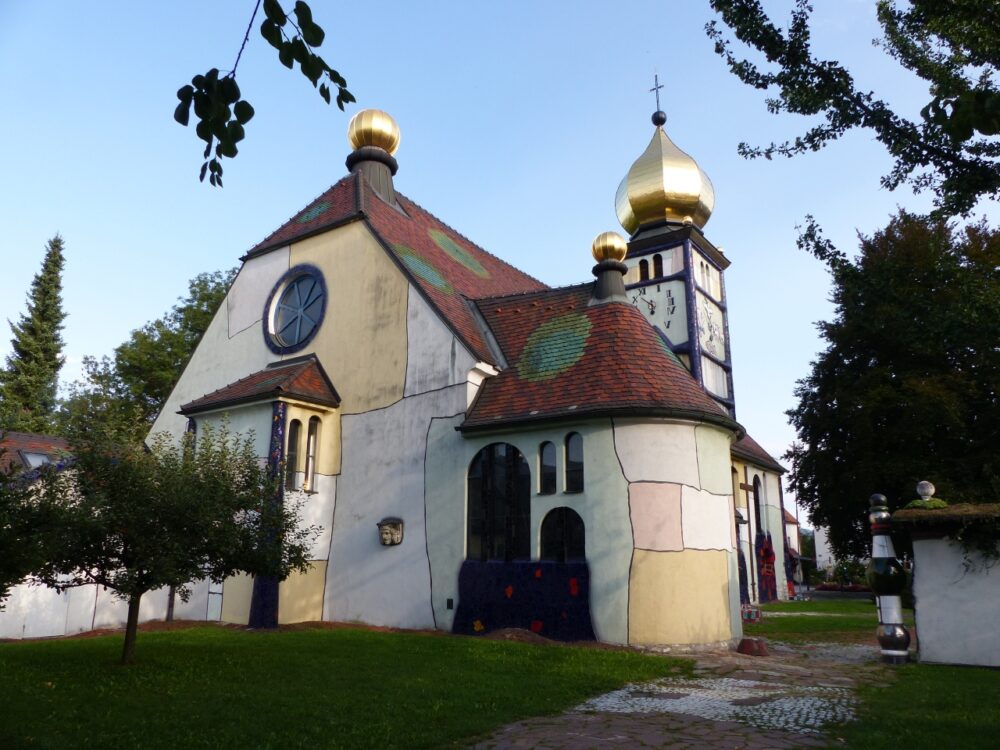
Graz’s location makes it a great base for exploring the rest of Styria and beyond. You can take day trips to charming alpine towns, stunning lakes, and even cross the border into Slovenia or Italy. Places like Riegersburg Castle, the thermal spa town of Bad Gleichenberg, and the scenic mountain region of Gesäuse National Park are all within easy reach.
I took a short train ride to the small town of Bärnbach, home to a unique, colorful church designed by artist Friedensreich Hundertwasser. It was a completely different experience from Graz but still carried the same creative and welcoming spirit. If you love exploring beyond the main tourist spots, Graz’s location makes it easy to discover hidden gems.
Cons – Things You Should Consider When Visiting Graz
1. Graz Lacks the Global Recognition of Vienna or Salzburg
While Graz is Austria’s second-largest city, it doesn’t have the same level of international fame as Vienna or Salzburg. Many travelers visiting Austria tend to focus on the more well-known cities, which means Graz often gets overlooked. As a result, some visitors might arrive with fewer expectations or struggle to find as much travel information and detailed itineraries compared to Austria’s more famous destinations.
I noticed this when planning my trip—while there were endless guides on things to do in Vienna or Salzburg, finding in-depth recommendations for Graz required more effort. When I told other travelers I was visiting Graz, some had never even heard of it. While this makes the city feel like a hidden gem, it also means that first-time visitors might not know what to expect or might find fewer resources to help plan their stay.
2. Limited Public Transportation Options Compared to Larger Cities
Graz has a decent tram and bus network, but it’s not as extensive or fast as the public transport systems in cities like Vienna or Munich. While the Old Town is compact and very walkable, getting to some of the outer districts or nearby attractions without a car can be a bit inconvenient. Some buses and trams don’t run as frequently in the evenings, making it harder to get around late at night.
I found this out when I tried to visit a restaurant outside the city center—while getting there was easy enough, getting back took longer than expected because the trams were running less frequently. While taxis and ride-sharing services are available, they can be expensive compared to public transport. If you’re staying in Graz without a car, it’s best to plan your routes ahead of time to avoid unexpected delays.
3. The Weather Can Be Unpredictable and Hot in Summer
Graz has a more temperate and Mediterranean-influenced climate compared to other Austrian cities, but this also means it can get quite hot in the summer. While cities like Innsbruck or Salzburg benefit from cooler alpine air, Graz can experience high temperatures, especially in July and August, sometimes reaching over 30°C (86°F). Additionally, the weather can change quickly, with sudden rain showers or thunderstorms appearing out of nowhere.
I visited in late June, expecting comfortable weather, but was surprised by how hot and humid it felt during the afternoon. Walking through the Old Town under the midday sun was exhausting, and air conditioning wasn’t always available in older buildings. While Graz’s many green spaces and shaded courtyards offer some relief, visitors who aren’t used to summer heat might find sightseeing a bit tiring during peak summer months.
4. Graz Has a Slower Pace of Life That Might Not Suit Everyone
Graz is known for its relaxed and laid-back atmosphere, which many visitors love, but for those who prefer the fast pace and energy of a big city, it might feel a little too quiet. The nightlife is more low-key compared to places like Vienna or Berlin, and outside of student bars and a few lively districts, evenings in Graz tend to be calm rather than buzzing with activity.
One night, I went looking for a lively area to have a drink, and while there were some great bars in the Lend district, most places had a casual, quiet vibe rather than a high-energy atmosphere. While this is great for those who enjoy a relaxed setting, visitors who love the rush of a big city might find Graz a little too peaceful, especially on weekdays. If you’re looking for non-stop entertainment and nightlife, Graz may not be the best fit.
5. Some Attractions and Restaurants Close Early or Have Limited Hours
One of the quirks of Graz is that many shops, restaurants, and attractions close earlier than you might expect, particularly on Sundays and public holidays. Unlike larger cities where businesses stay open late, many places in Graz shut down by early evening, which can be frustrating if you’re used to having more flexibility in your schedule.
I found this out the hard way when I tried to grab dinner around 9:00 PM, only to realize that many restaurants had already stopped serving food. Similarly, several shops I wanted to visit closed early on Saturdays and weren’t open at all on Sundays. While there are still a few late-night options, visitors should plan accordingly, especially if they’re used to a city where things stay open much later.
When to Visit Graz
Graz is beautiful year-round, but spring (April to June) and autumn (September to October) are ideal. During these months, the weather is mild and the city’s parks, like the Schlossberg, are at their most picturesque with blooming flowers or autumn leaves. Summer, from July to August, brings warm weather and several cultural events, but it can also be busier, with locals and visitors flocking to the outdoor cafes and festivals. For Christmas market fans, December is a festive delight, with the historic centre sparkling with holiday lights and market stalls selling Styrian treats and mulled wine.
How to Get to Graz
Graz is served by Graz Airport (GRZ), located about 10 kilometres south of the city centre, with flights from Austrian Airlines, Lufthansa, and KLM connecting it to European hubs. The S-Bahn train links the airport to the main train station in just 15 minutes, or you can take a taxi or bus for easy access to the city. If arriving from abroad, Vienna Airport (VIE) is another option, with regular direct trains connecting Vienna to Graz in about 2.5 hours. OBB trains offer a scenic and efficient way to reach Graz from major cities like Vienna and Munich.
Where to Stay in Graz
Graz has a variety of neighbourhoods to choose from, each with its own vibe. Here are some top picks:
- Luxury: Innere Stadt (Old Town) – Perfect for those who want to be in the centre of the action near landmarks like the Clock Tower. Hotel Schlossberg and Grand Hotel Wiesler offer luxurious stays with historic charm.
- Mid-range: Lend – Just across the Mur River, Lend is trendy and filled with cafes, boutiques, and the quirky Kunsthaus Graz. Hotels like Lendhotel and Ibis Styles Graz provide comfort with style at reasonable prices.
- Budget: Gries – Known for its multicultural vibe and budget-friendly options, Gries is close to the main train station and has affordable spots like a&o Graz Hauptbahnhof and B&B Graz.
Getting Around Graz
Graz is easy to navigate on foot, especially in the compact Old Town, where nearly all major sights are within walking distance. For longer distances, the Graz Linien network of trams and buses is efficient and well-connected, with single tickets and day passes available. If you’re planning to sightsee, consider the Graz 24-Hour Ticket for unlimited travel across public transport. Graz also has a bike-sharing programme, GrazBike, which is a budget-friendly and green way to explore. For a unique view of the city, don’t miss the Schlossbergbahn funicular or Schlossberg lift, which will take you up to the hilltop fortress.
How Long to Spend in Graz
Two to three days is ideal for Graz, giving you time to explore the Old Town, visit Schloss Eggenberg, and take in the art at Kunsthaus Graz without rushing. You’ll have time to enjoy the local cuisine at the city’s bustling farmer’s markets and relax in cafes. If you have more time, add an extra day to explore the Styrian wine region, which is known for its excellent white wines and rolling vineyards just an hour’s drive from the city.
Conclusion
So, is Graz worth visiting? Absolutely! With its beautifully preserved Old Town, cutting-edge art scene, and delicious Styrian cuisine, Graz offers a unique and refreshing take on Austrian culture. While it’s less touristy than Vienna or Salzburg, that’s part of its charm—it feels authentic and inviting. If you’re ready to discover a city that’s brimming with history, creativity, and flavour, start planning your trip to Graz today. You won’t be disappointed!
